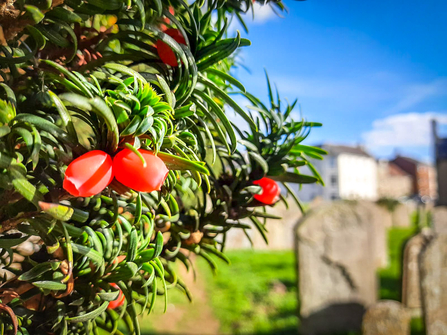
Arils (yew berries) on a tree in an Oxfordshire churchyard. Picture: Pete Hughes
Protect wildlife for generations to come
A robin at BBOWT's College Lake nature reserve in the middle of winter. Picture: Phil Bruss

Arils (yew berries) on a tree in an Oxfordshire churchyard. Picture: Pete Hughes
The most festive plant of all is surely the Christmas tree – but did you know we only have three native conifers in the UK? The Scots pine is mostly found north of the border; yews are frequently found in churchyards and at this time of year can be identified by their bright red 'berries' – properly called arils. Juniper is much scarcer than it used to be, but we have a healthy population at our Grangelands nature reserve in the Chilterns.
Did you know we also sell Christmas trees from our nature reserves each year? These trees are harvested by volunteers as part of our habitat conservation. See if we have an event coming up near you:
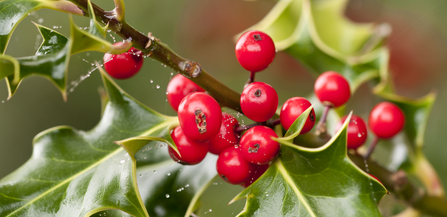
Holly by Ross Hoddinott
Holly is a rarity in the plant world because it's an evergreen ‘broadleaf’ that keeps its green leaves throughout the year - hence its association with Christmas. Look out for its spiked leaves in woodlands across our area. Holly trees are either male or female, and if you see red berries, you know it’s a female.
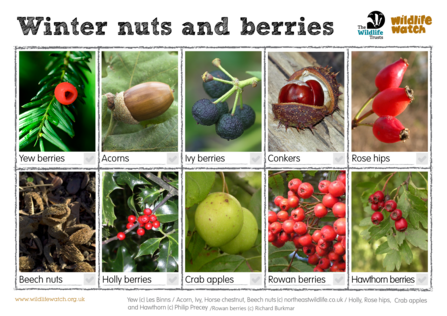
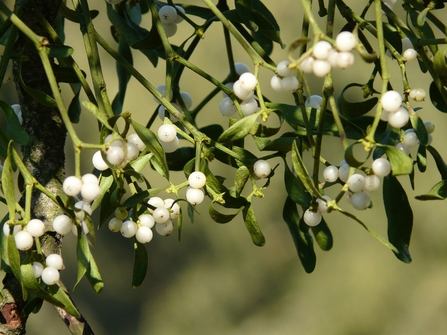
Mistletoe berries by Hans Braxmeier
Round clumps of mistletoe silhouetted against the sky are an iconic winter sight. The white berries are highly poisonous to humans, but you might see mistle thrushes, fieldfares and blackcaps scoffing them as they have evolved to cope with its toxic effect. The seeds are coated with a sticky substance called viscin which glues them to the branches, ready to germinate around April.
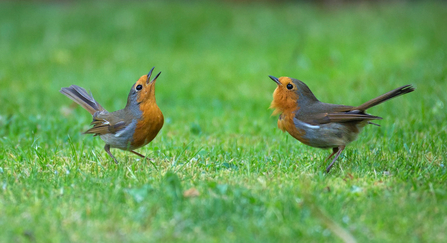
Jon Hawkins - Surrey Hills Photography
In December robins become much more prominent in our gardens. They are usually territorial, but become more so as it gets colder. They mark their territory both by singing and posturing to rivals. If this behaviour doesn’t put off the intruder, you might see a fight lasting anything from a few seconds to over an hour!
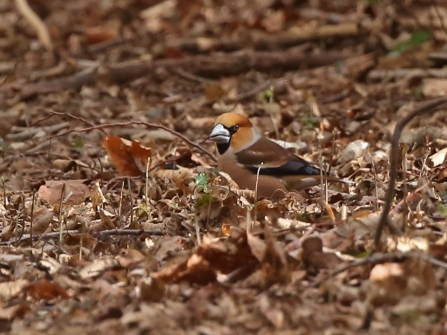
Hawfinches are the UK's largest finch and are easily identified, once you find one, by their very large bill, also by a repeated sharp metallic ‘pix’ call given from tree tops. The number of hawfinches increases in winter as birds from colder parts of Europe arrive here to find food so keep an eye out, particularly in open, mature woodlands.
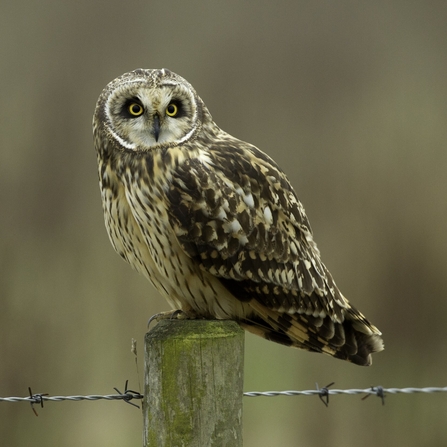
Short-eared owl © Ben Hall/2020VISION
Unlike other species of owl, you may see short-eared owls hunt during the day as well as at dusk. In the winter our resident birds are joined by more from the continent. Look out for them hunting small mammals, and occasionally small birds, over wetlands and marshy grassland such as at our Chimney Meadows and Upper Ray Meadows reserves.
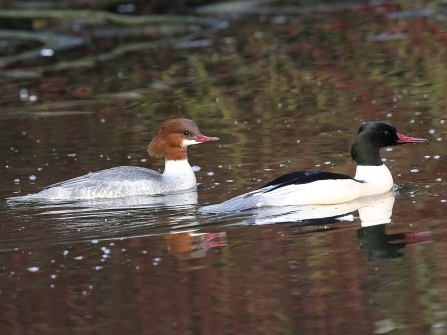
Goosanders by Margaret Holland
Goosanders catch fish with their long, serrated bills, and are often called sawbills. Young goosanders need to eat over 30kg of fish before they reach adulthood. Their scientific name, Mergus merganser, roughly translates as 'plunging goose' as they are often diving under water to hunt for fish. Goosander are one of the many waterfowl you can spot at our Nature Discovery Centre in Thatcham. Why not join our Bird Walk around the site on Wednesday, 13 December, or our Birds and a Brew session that Friday, and learn more about these fascinating fowl.
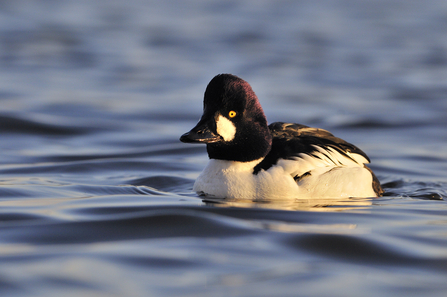
Male goldeneye by Fergus Gill/2020VIsion
Goldeneyes are distinctive ducks, often seen on large lakes and rivers. Keep an eye out for them at our Hosehill Lake and Calvert Jubilee nature reserves, where a few arrive most winters. Goldeneyes nest in the Scottish Highlands in cavities in trees so their chicks have to perform a great leap of faith the day after hatching to leave the nest and reach the ground! The population increases massively in winter due to migrants from the continent.
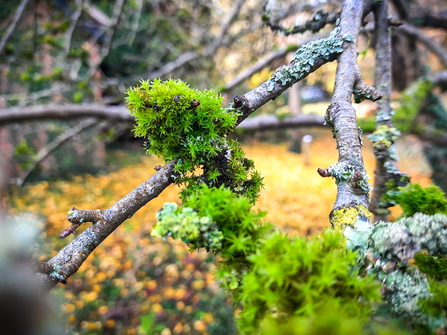
Moss and lichen growing on a tree at BBOWT's Woolley Firs education centre in the middle of winter. Picture: Pete Hughes
With the leaves on the trees gone, it’s much easier at this time of year to enter the miniature world of mosses and lichens. It’s well worth taking a magnifying glass on a walk to get a closer look. Species to look out for include for silky forklet moss, marsh hair moss and sphagnum moss, which can be found at our Wildmoor Heath reserve in Berkshire.
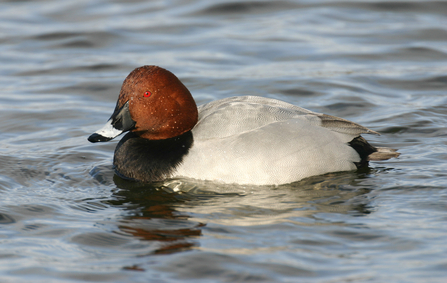
Male pochard by Tom Marshall
A small number of pochard live in the UK all year round but you will see many more during the winter when the numbers increase as birds arrive from the continent. The males are very distinctive with their chestnut heads. Our College Lake nature reserve near Aylesbury is one of the best sites in Buckinghamshire to see a whole range of wintering birds.
Check out our College Lake webcam live stream and see what you spot!
College Lake webcam (https://www.youtube.com/watch?v=JD6mPNDiBdo)
View the live webcam from College Lake
Sign up below to receive the latest news from BBOWT, tips about how you can help wildlife, plus information on how you can get involved.